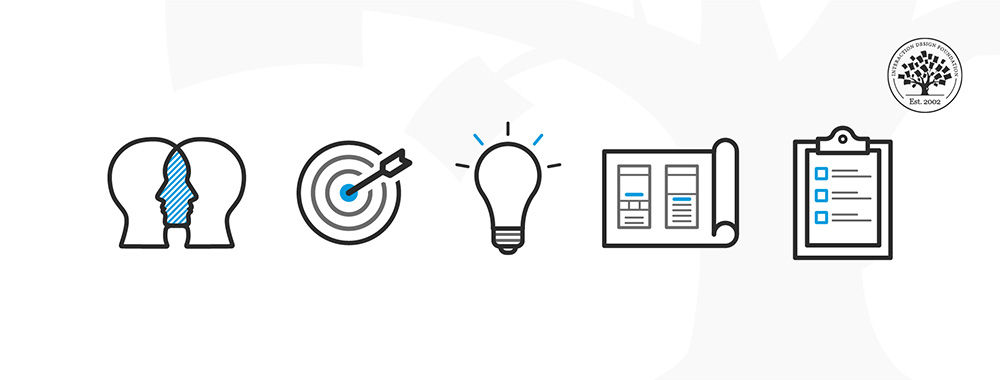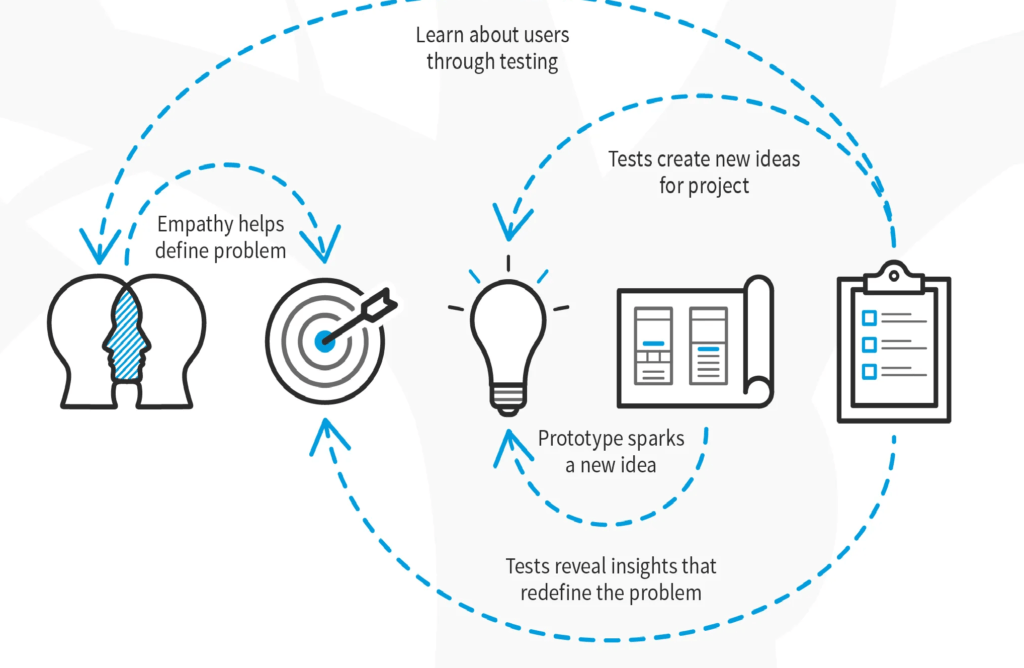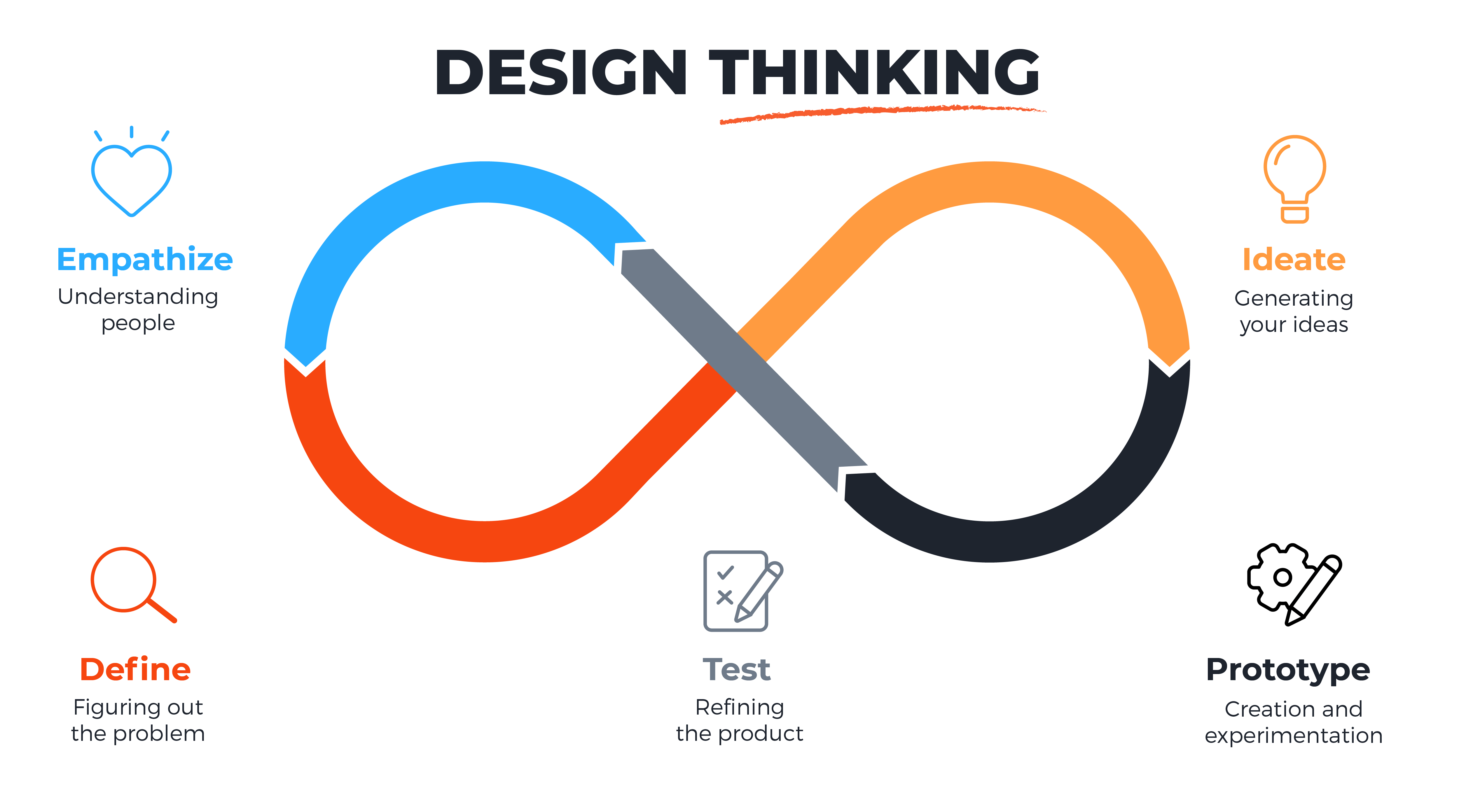Design Thinking: The new way of BRAINSTORMING

Introduction
All great innovators in literature, art, music, science, engineering, and business have used design thinking. It is not just the domain of designers.
Why is it called design thinking then?
What makes Design Thinking unique is that it can assist us in methodically extracting, teaching, learning, and applying these human-centered strategies to solve challenges in our designs, enterprises, governments, and everyday lives.
Leading colleges throughout the world, including Stanford, Harvard, Imperial College London, and the Srishti Institute in India, teach the related methodology. Some of the world’s most well-known firms, like Apple, Google, and Samsung, have quickly adopted the design thinking approach. You should understand what design thinking is and why it’s so popular before incorporating it into your own workflows. Here, we’ll get right to the point and explain what design thinking entails and why it’s so in demand.

Design thinking: What is it?
Understanding your users, questioning presumptions, redefining challenges, and coming up with creative ideas you can prototype and test are all steps in the iterative process of design thinking. The main objective is to find alternative approaches and solutions that are not immediately obvious given your current level of comprehension. Design thinking is a problem-based approach that encourages collaboration and creativity in problem resolution. Design thinking is more than simply a method; it offers a variety of practical techniques to support the application of a completely new way of thinking.
Design thinking is fundamental:
- Revolves around a keen interest in comprehending the target market for the goods and services we design.
- Aids in observing and cultivating empathy for the target consumers.
- Improves our capacity for inquiry: design thinking asks us to consider the consequences as well as the assumptions and problems.is quite helpful for tackling issues that are vague or unidentified. and involves continual exploration of new concepts and ideas through sketching, prototypes, testing, and trials.
Why Should Everyone Practice Design Thinking?
How many individuals participate in the design phase when your company decides to develop a new product or service? People from many departments frequently form the teams that construct items. As a result, it may be challenging to conceive, classify, and arrange thoughts and solutions for the problems you attempt to tackle. Using a design thinking method is one technique to arrange the main ideas of a project and keep it on track. Anyone can participate in this.
A Scientific Aspect of Design Thinking
Both art and science are involved in design thinking. The scientific side, in other words, integrates research into ambiguous aspects of the issue with the logical and analytical study. This enchanted mixture reveals unknown variables and aids in the discovery of other tactics that result in genuinely novel solutions.
The scientific activities examine the circumstances under which products function and how users engage with them.

There are 5 stages to the non-linear, iterative process of design thinking. Empathize, define, ideate, prototype, and test, in that order. At any time during the process, you can carry out the phases concurrently, repeat them, and go back to a previous step
As you work to understand your users, question presumptions, and reframe problems, the process delves a little bit deeper into problem-solving. As it pushes us to comprehend and confront our ingrained, constrictive thought patterns and come up with creative solutions to the issues our consumers experience, the design thinking process includes both a scientific and an artistic component.
Conclusion
Design thinking is simply a method of problem-solving with the goal of making products better. It aids in the assessment and analysis of a problem’s known components as well as the identification of a problem’s more ambiguous or ancillary contributing causes. In contrast, a more scientific method tests the tangible and well-known elements in order to find a solution.
Add Comment
You must be logged in to post a comment.








Siddharth
Great work